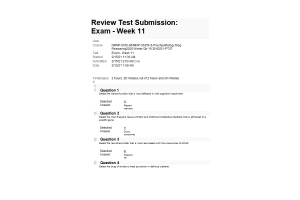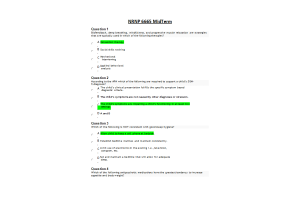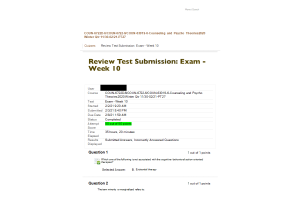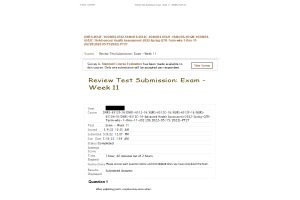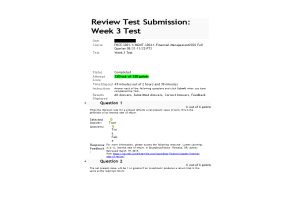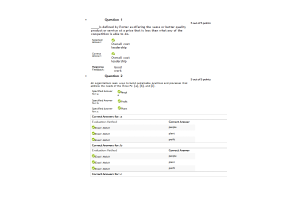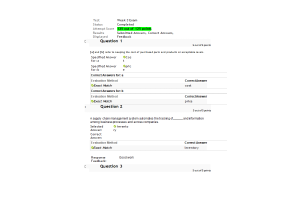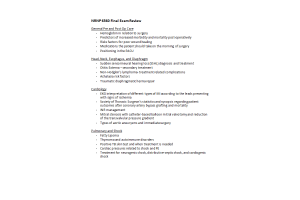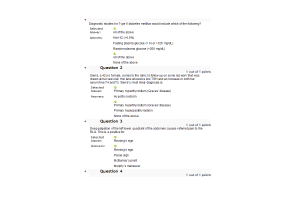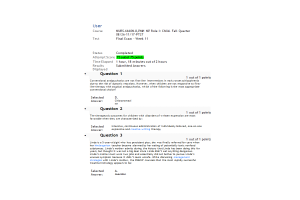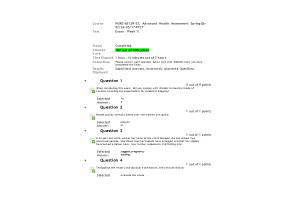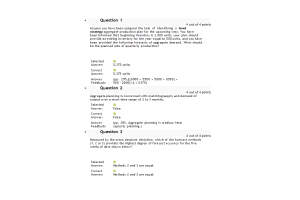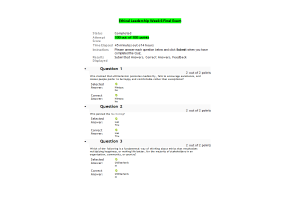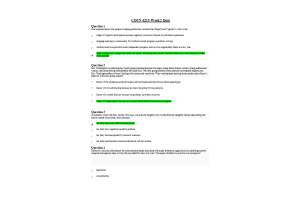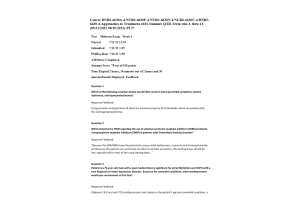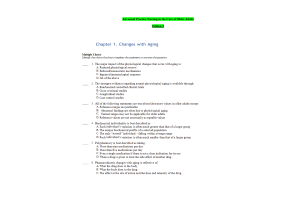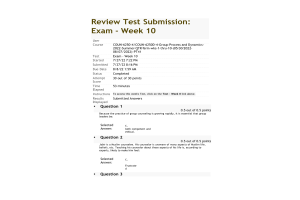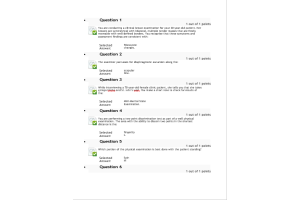COUN 6722D-2, COUN 6301S-2, COUN 6722-2, Week 10 Final Exam (100% Correct Summer-QTR)
- $55.00
1.
Question: Two major disorders given a great
deal of attention in feminist literature are:
2.
Question: Two major disorders given a great
deal of attention in feminist literature are:
3.
Question: An ethnic minority client is silent
during the initial phase of counseling. This silence is probably best
interpreted as:
4.
Question: The founder of rational emotive
behavioral therapy (REBT) is:
5.
Question: Although the theoretical
underpinnings of transpersonal theory can be credited to a number of
individuals, theories, and philosophical approaches to mental health and
spiritual experience, has emerged as the primary leader of this burgeoning
field.
6.
Question: Action therapy is considered a form
of:
7.
Question: Feminist counselors believe it is
essential to recognize that women and men are socialized differently and that
gender role expectations begin to influence human development from the moment a
child is born.
8.
Question: The developer of dialectical
behavior therapy is:
9.
Question: One of the primary goals of
transpersonal counseling is to:
10.
Question: According to Albert Ellis,
............ fall under which of the following categories?
11.
Question: An important step in becoming a
culturally competent counselor or group worker is gaining awareness of one’s own
cultural influences.
12.
Question: Understanding the nature of the
presenting problem in the goals of cognitive-behavioral theory is best looked
at through which perspective?
13.
Question: Regarding multicultural counseling,
narrative therapy has been found to be particularly effective because:
14.
Question: Adlerians believe that
discouragement:
15.
Question: A client is partaking in cognitive
distortion when he or she exaggerates a negative event to the point that the
event has more impact than it deserves. What is this called?
16.
Question: Which one of the following is not
associated with the cognitive-behavioral action-oriented therapies?
17.
Question: The term minority or marginalized
refers to:
18.
Question: Reality therapy can be applied to
the following clients:
19.
Question: Counselor competency with
integrative measures and techniques is one of the four basic factors necessary
in the use of integrative approaches in counseling and psychotherapy.
20.
Question: The concept of triangulation is
most associated with:
21.
Question: Helping clients achieve low
frustration tolerance is a major goal of rational emotive behavior therapy.
22.
Question: A change agent is:
23.
Question: Art therapy, dance/movement
therapy, music therapy, and drama therapy are all considered:
24.
Question: To adequately understand the
culturally different client, counselors should have some specific information
about that culture.
25.
Question: Rational emotive behavior therapy
is based on the assumption that humans have a biological tendency to think
irrationally as well as rationally.
26.
Question: The central issue in existential
therapy is:
27.
Question: William Glasser would agree with
all of the following except:
28.
Question: In practicing reality therapy,
counselors and therapists focus on:
29.
Question: All of the following are techniques
used in solution-focused therapy, except for:
30.
Question: The systems perspective implies:
31.
Question: The Association for Multicultural
Counseling and Development’s Multicultural Counseling Competencies emphasize:
32.
Question: Trans personalism views the
development of higher consciousness as being necessary for transforming our
lives.
33.
Question: Which of these solution-focused
therapy techniques involves asking clients to describe times in their lives
they were able to solve their problem or when their problem was less severe?
34.
Question: In reality therapy, the skilled
counselor or therapist treats behavior as:
35.
Question: The family life spiral is:
36.
Question: A family system’s perspective
implies:
37.
Question: In the A-B-C model proposed by
Albert Ellis, the factor that creates the emotional and behavioral consequences
is the:
38.
Question: When using extinction to change
behavior:
39.
Question: One strategy for empowering clients
is to involve them in naming their problem and participating in directing the
counseling process. This strategy is called:
40.
Question: The core practice of transpersonal
counseling includes which of the following:
41.
Question: Which of the following family
therapists is best known for his or her structural approach to treatment:
42.
Question: All of the following are goals of
feminist therapy, except for:
43.
Question: Which of the following family
therapists is best known for his or her strategic approach to treatment?
44.
Question: Cognitive-behavioral theories
involve cognitive restructuring, coping skills, and problem solving.
45.
Question: Which of the following is not consistent
with rational emotive behavior therapy?
46.
Question: The central concept of the
expressive arts approach in counseling is:
47.
Question: The counseling profession has fully
adapted to the diversity of society.
48.
Question: Which of the following are true
regarding advocacy as a part of counseling and psychotherapy?
49.
Question: Which of the following is not considered
one of the six core principles of feminist therapy?
50.
Question: Feminist theory is:
2.
Question: Two major disorders given a great
deal of attention in feminist literature are:
3.
Question: An ethnic minority client is silent
during the initial phase of counseling. This silence is probably best
interpreted as:
4.
Question: The founder of rational emotive
behavioral therapy (REBT) is:
5.
Question: Although the theoretical
underpinnings of transpersonal theory can be credited to a number of
individuals, theories, and philosophical approaches to mental health and
spiritual experience, has emerged as the primary leader of this burgeoning
field.
6.
Question: Action therapy is considered a form
of:
7.
Question: Feminist counselors believe it is
essential to recognize that women and men are socialized differently and that
gender role expectations begin to influence human development from the moment a
child is born.
8.
Question: The developer of dialectical
behavior therapy is:
9.
Question: One of the primary goals of
transpersonal counseling is to:
10.
Question: According to Albert Ellis,
............ fall under which of the following categories?
11.
Question: An important step in becoming a
culturally competent counselor or group worker is gaining awareness of one’s own
cultural influences.
12.
Question: Understanding the nature of the
presenting problem in the goals of cognitive-behavioral theory is best looked
at through which perspective?
13.
Question: Regarding multicultural counseling,
narrative therapy has been found to be particularly effective because:
14.
Question: Adlerians believe that
discouragement:
15.
Question: A client is partaking in cognitive
distortion when he or she exaggerates a negative event to the point that the
event has more impact than it deserves. What is this called?
16.
Question: Which one of the following is not
associated with the cognitive-behavioral action-oriented therapies?
17.
Question: The term minority or marginalized
refers to:
18.
Question: Reality therapy can be applied to
the following clients:
19.
Question: Counselor competency with
integrative measures and techniques is one of the four basic factors necessary
in the use of integrative approaches in counseling and psychotherapy.
20.
Question: The concept of triangulation is
most associated with:
21.
Question: Helping clients achieve low
frustration tolerance is a major goal of rational emotive behavior therapy.
22.
Question: A change agent is:
23.
Question: Art therapy, dance/movement
therapy, music therapy, and drama therapy are all considered:
24.
Question: To adequately understand the
culturally different client, counselors should have some specific information
about that culture.
25.
Question: Rational emotive behavior therapy
is based on the assumption that humans have a biological tendency to think
irrationally as well as rationally.
26.
Question: The central issue in existential
therapy is:
27.
Question: William Glasser would agree with
all of the following except:
28.
Question: In practicing reality therapy,
counselors and therapists focus on:
29.
Question: All of the following are techniques
used in solution-focused therapy, except for:
30.
Question: The systems perspective implies:
31.
Question: The Association for Multicultural
Counseling and Development’s Multicultural Counseling Competencies emphasize:
32.
Question: Trans personalism views the
development of higher consciousness as being necessary for transforming our
lives.
33.
Question: Which of these solution-focused
therapy techniques involves asking clients to describe times in their lives
they were able to solve their problem or when their problem was less severe?
34.
Question: In reality therapy, the skilled
counselor or therapist treats behavior as:
35.
Question: The family life spiral is:
36.
Question: A family system’s perspective
implies:
37.
Question: In the A-B-C model proposed by
Albert Ellis, the factor that creates the emotional and behavioral consequences
is the:
38.
Question: When using extinction to change
behavior:
39.
Question: One strategy for empowering clients
is to involve them in naming their problem and participating in directing the
counseling process. This strategy is called:
40.
Question: The core practice of transpersonal
counseling includes which of the following:
41.
Question: Which of the following family
therapists is best known for his or her structural approach to treatment:
42.
Question: All of the following are goals of
feminist therapy, except for:
43.
Question: Which of the following family
therapists is best known for his or her strategic approach to treatment?
44.
Question: Cognitive-behavioral theories
involve cognitive restructuring, coping skills, and problem solving.
45.
Question: Which of the following is not consistent
with rational emotive behavior therapy?
46.
Question: The central concept of the
expressive arts approach in counseling is:
47.
Question: The counseling profession has fully
adapted to the diversity of society.
48.
Question: Which of the following are true
regarding advocacy as a part of counseling and psychotherapy?
49.
Question: Which of the following is not considered
one of the six core principles of feminist therapy?
50.
Question: Feminist theory is:
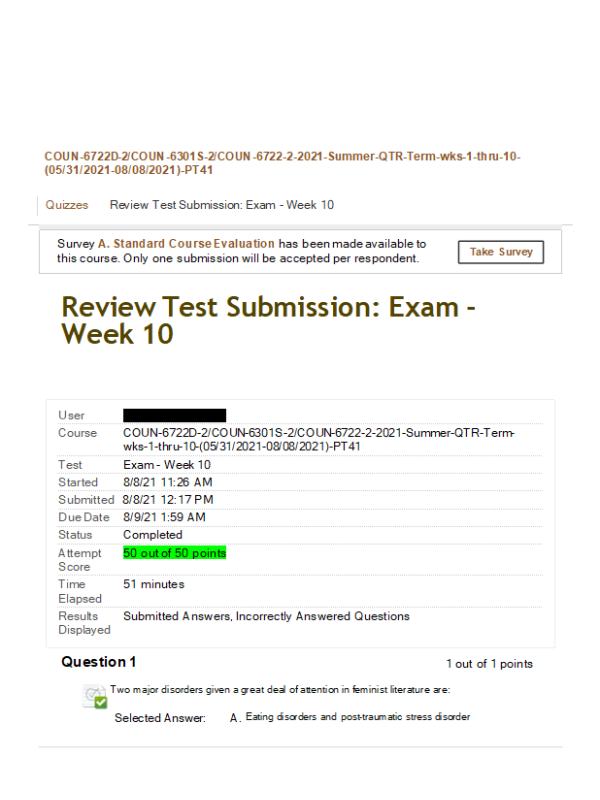
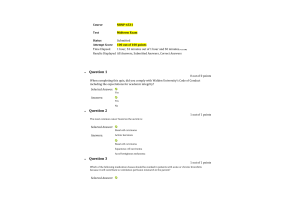
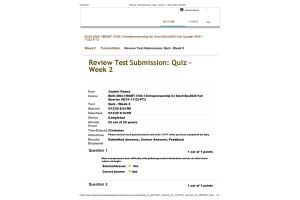
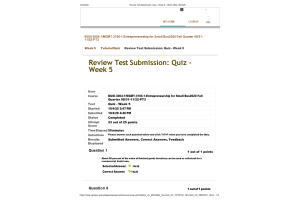
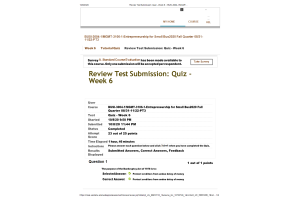
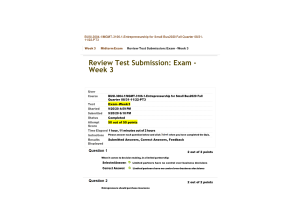
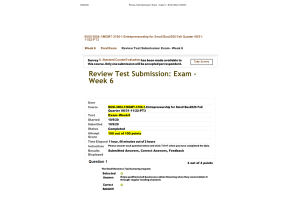
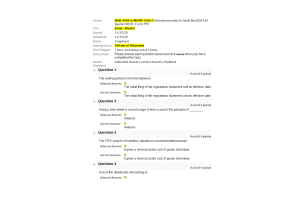
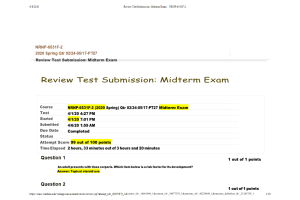
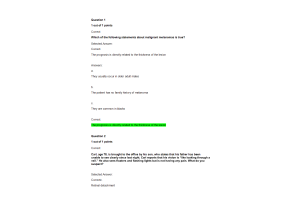
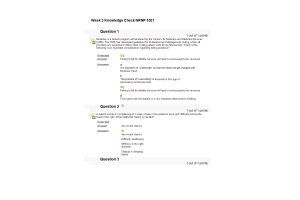


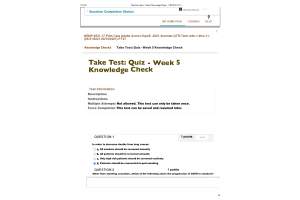
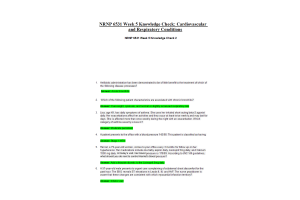
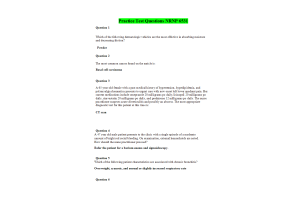
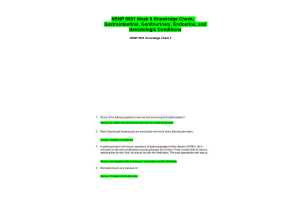

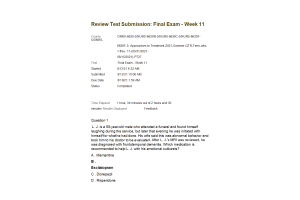
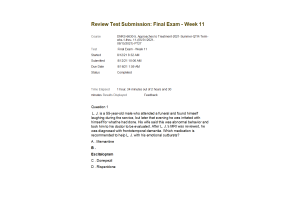
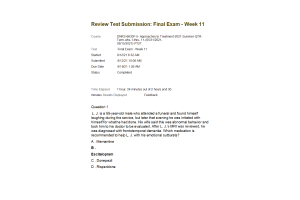
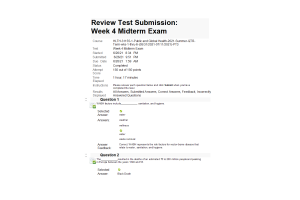
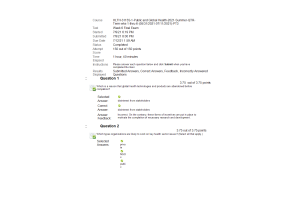
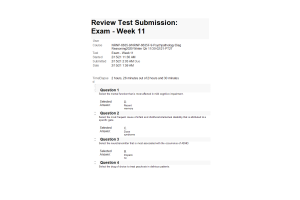
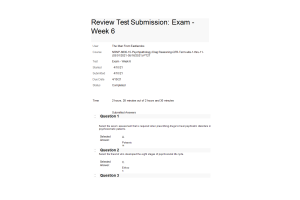
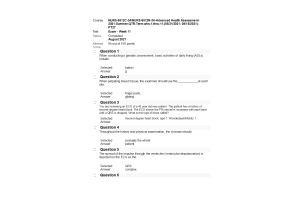
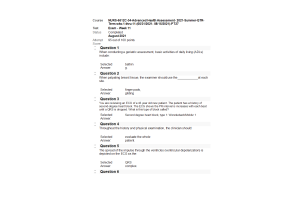
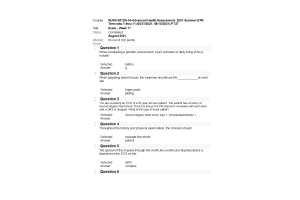
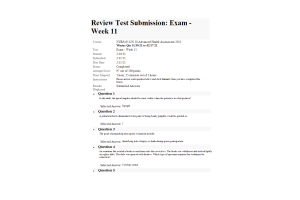
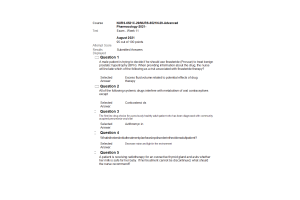
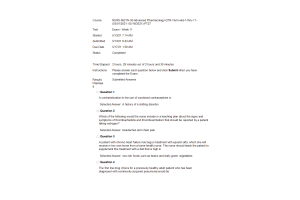
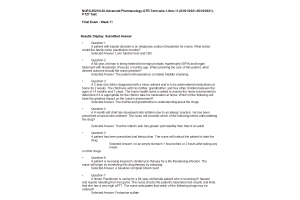
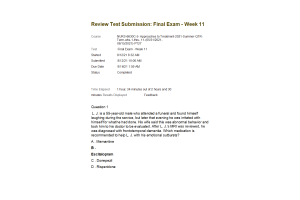
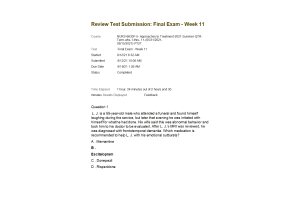
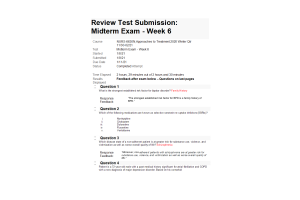
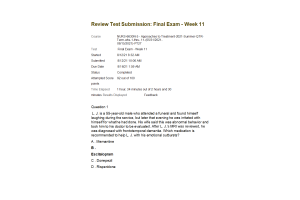
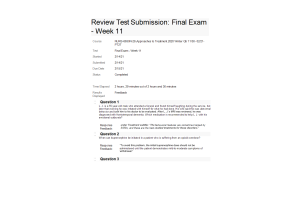
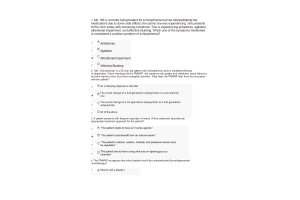
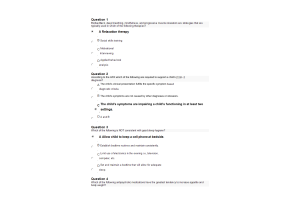
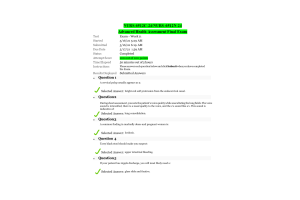
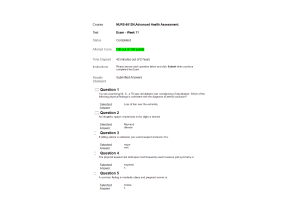
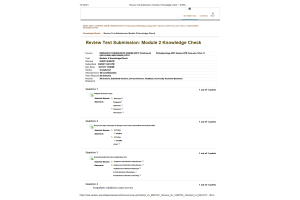

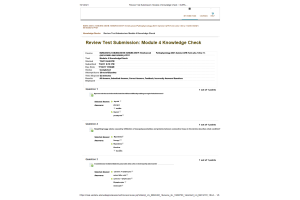
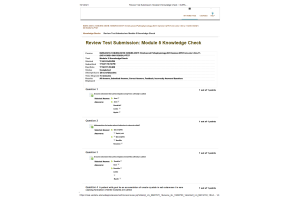
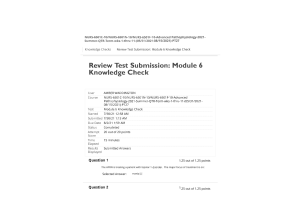

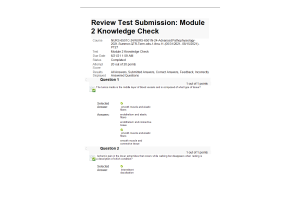
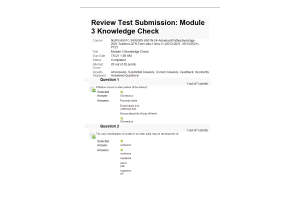
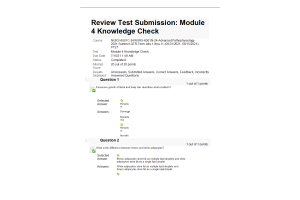
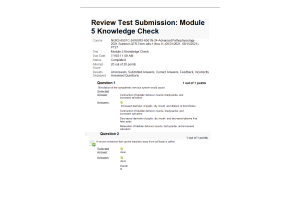
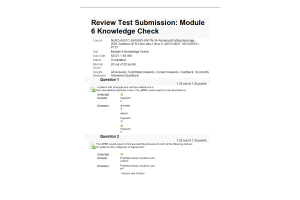
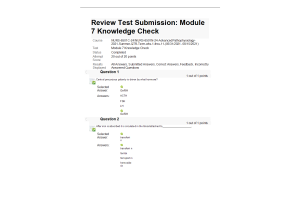
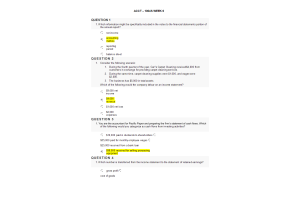
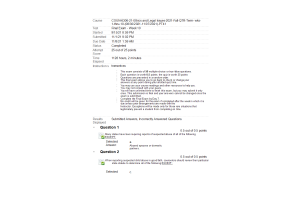
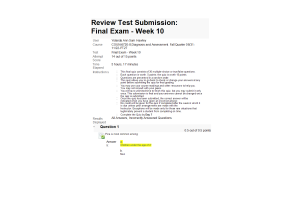
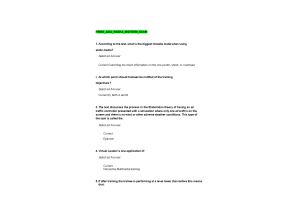
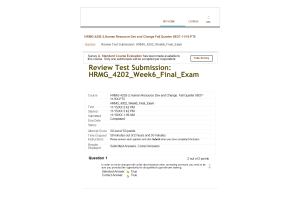
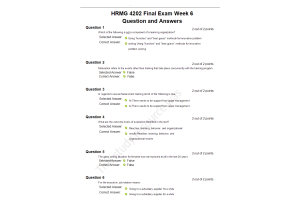
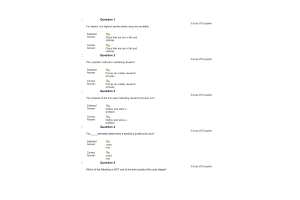
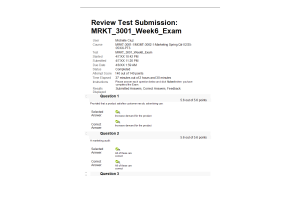
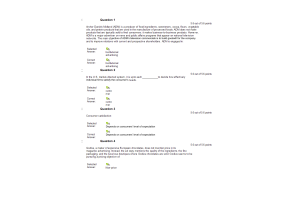
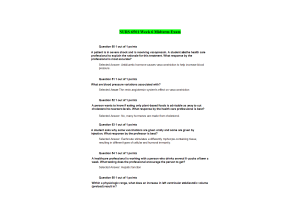
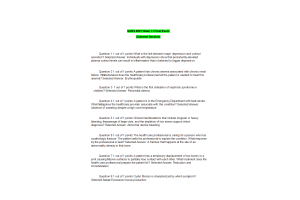

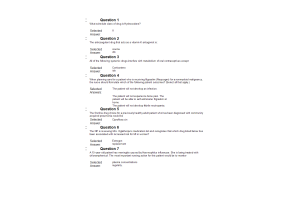
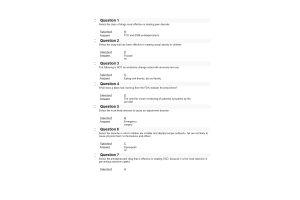
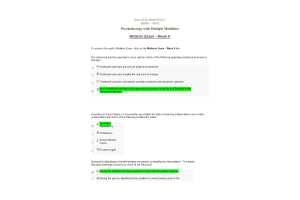
-300x200.png)


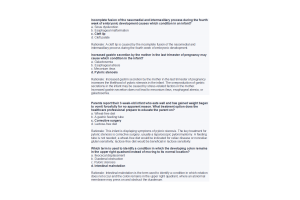
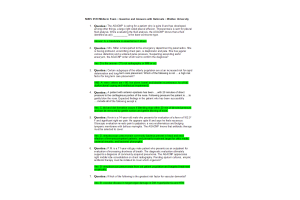
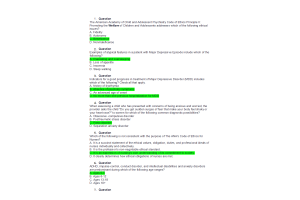
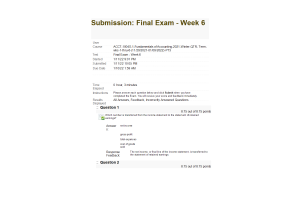
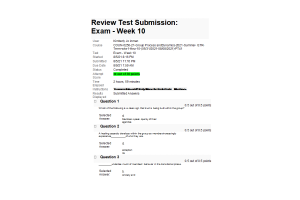
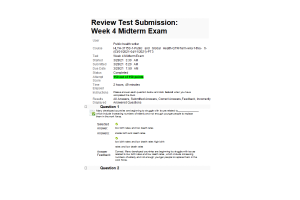
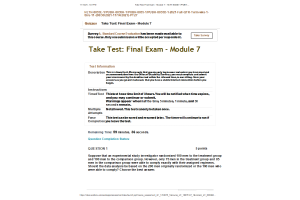
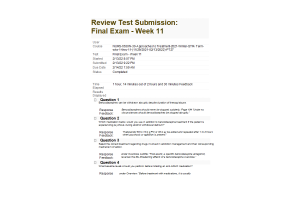

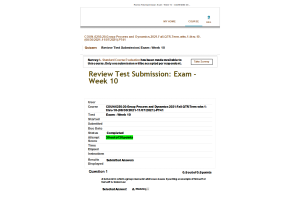

/NRNP 6635 Week 11 Final Exam (Fall 2021)-300x200.png)

